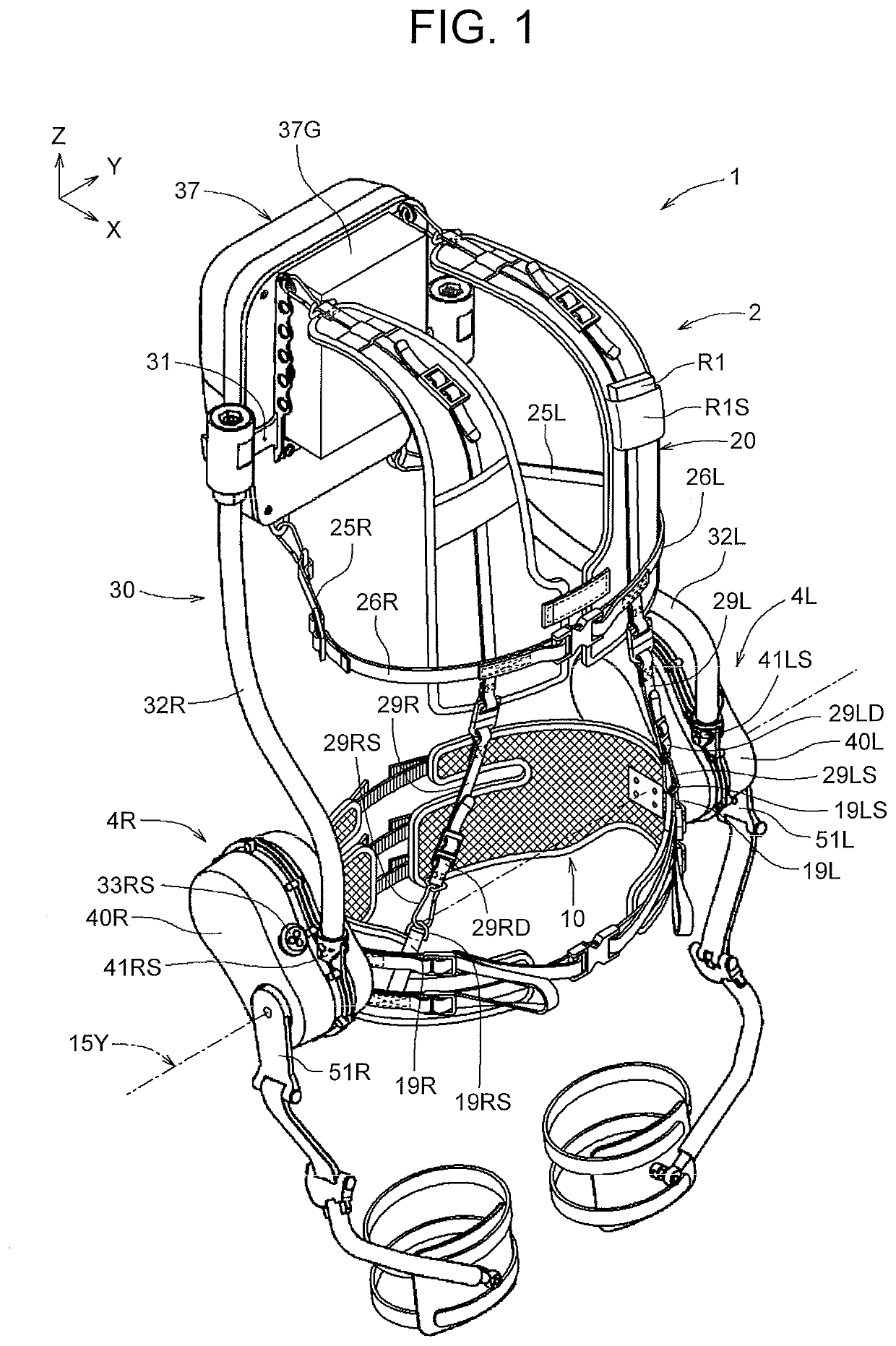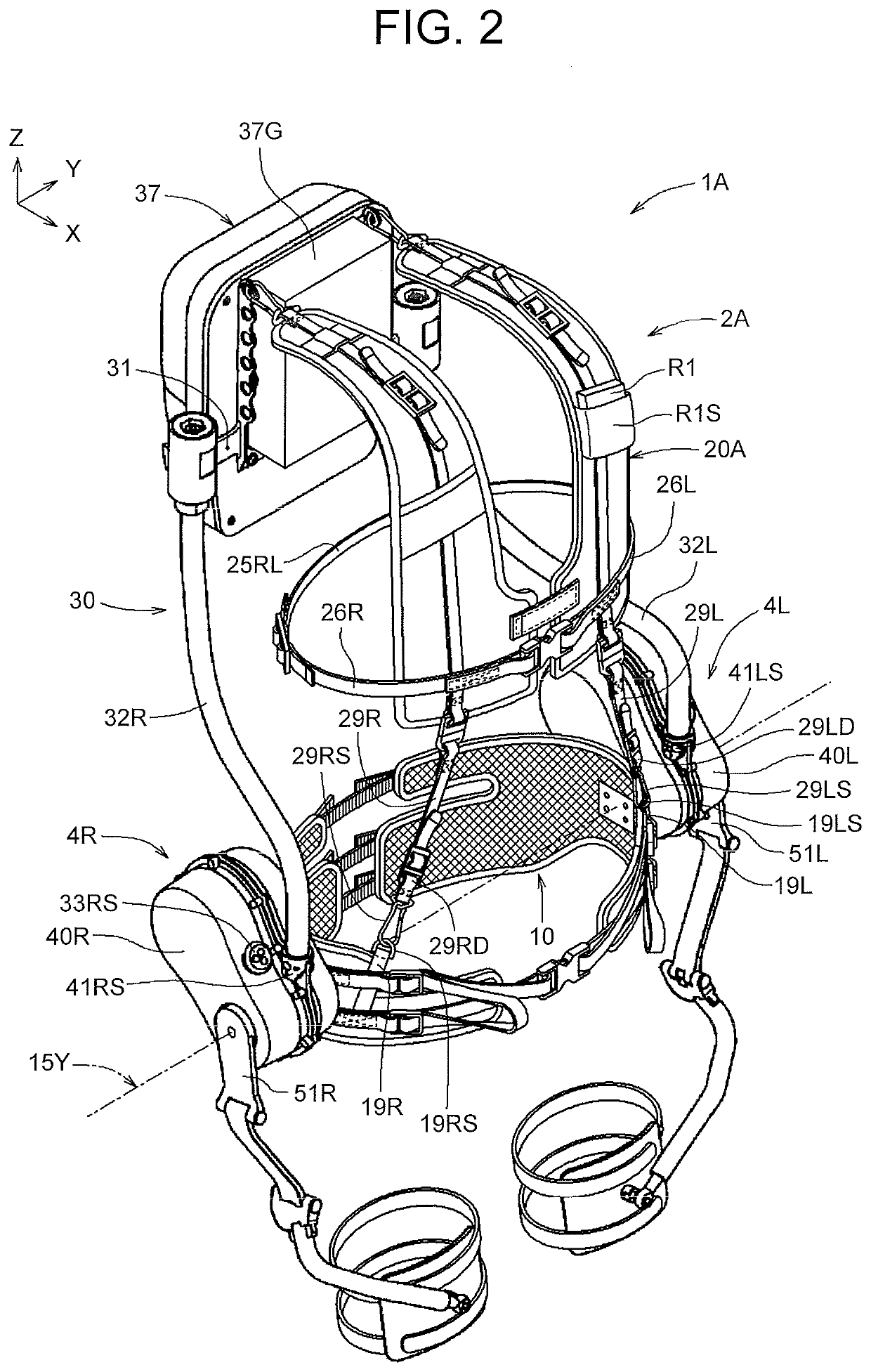Assist device
a technology of a device and a person, applied in the field of assist devices, can solve the problems of many biological problems, extreme troublesome for the person being assisted, and the removal process, and achieve the effect of reducing the virtual elapsed time and reducing the difficulty
- Summary
- Abstract
- Description
- Claims
- Application Information
AI Technical Summary
Benefits of technology
Problems solved by technology
Method used
Image
Examples
Embodiment Construction
[0073]The overall structure of an assist device 1 will be described below based on FIG. 1 to FIG. 25. The assist device 1 is a device that assists a person being assisted, for example, in turning his or her thighs relative to the hips (or his or her hips relative to the thighs) when lifting a load (or lowering a load) and in turning his or her thighs relative to the hips when walking. The X-axis, Y-axis, and Z-axis in the drawings are orthogonal to one another, and as seen from the person being assisted wearing the assist device, an X-axis direction, Y-axis direction, and Z-axis direction correspond to a forward direction, leftward direction, and upward direction, respectively.
[0074]FIG. 1 shows the overall external appearance of the assist device 1. FIG. 2 shows the overall external appearance of an assist device 1A in which a close-fitting belt 25RL replaces a right side belt 25R and a left side belt 25L of FIG. 1. The only thing that differentiates the assist device 1A (and body ...
PUM
 Login to View More
Login to View More Abstract
Description
Claims
Application Information
 Login to View More
Login to View More - R&D
- Intellectual Property
- Life Sciences
- Materials
- Tech Scout
- Unparalleled Data Quality
- Higher Quality Content
- 60% Fewer Hallucinations
Browse by: Latest US Patents, China's latest patents, Technical Efficacy Thesaurus, Application Domain, Technology Topic, Popular Technical Reports.
© 2025 PatSnap. All rights reserved.Legal|Privacy policy|Modern Slavery Act Transparency Statement|Sitemap|About US| Contact US: help@patsnap.com



